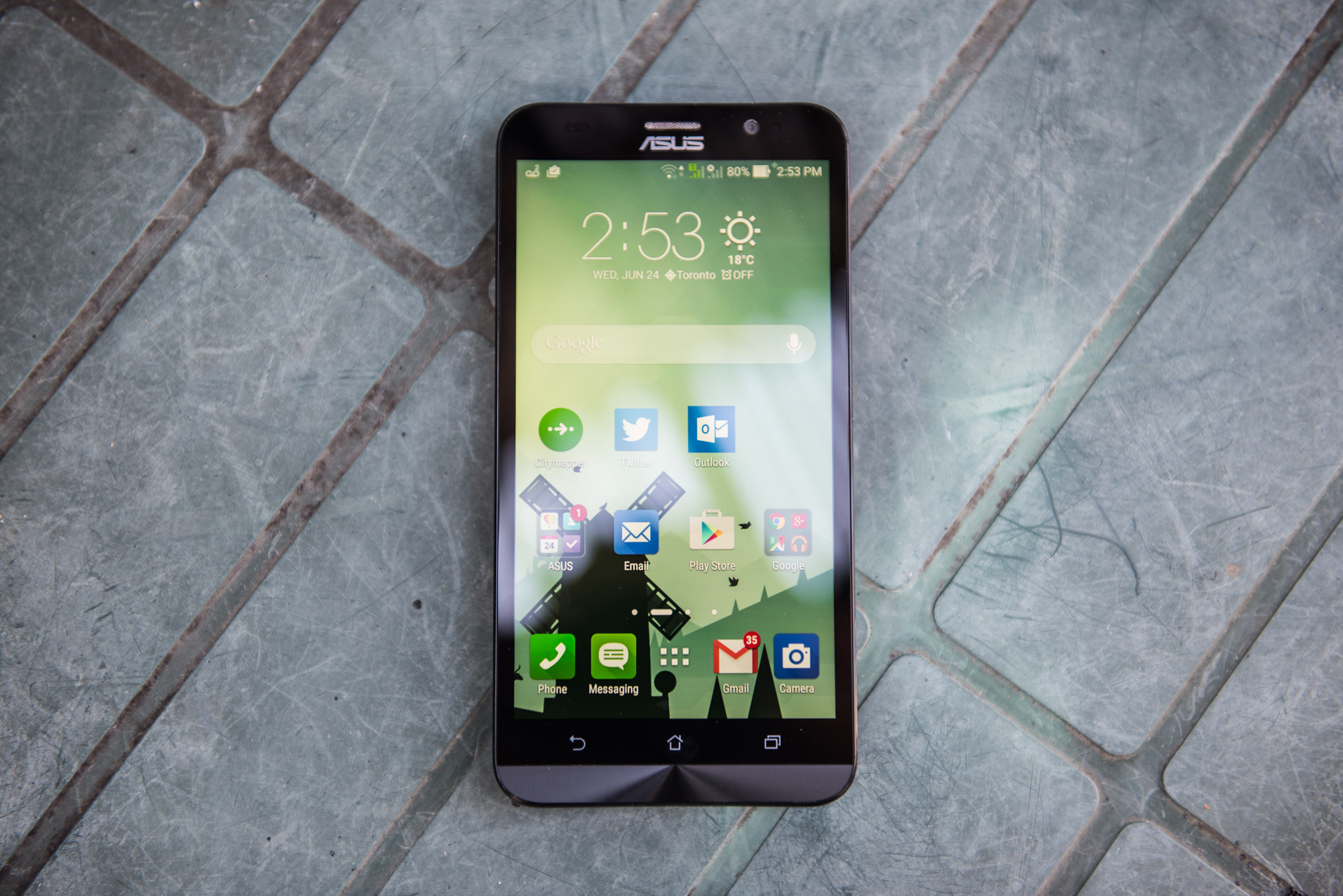
“The next billion people.” Google used that term several times during its recent developer conference, and maintains that Android’s future is the future of computing, connecting the poor and disenfranchised.
Lofty goals, certainly, but Google doesn’t create smartphones, just the operating system on which they run. Companies like Xiaomi, Lenovo, Motorola, HTC and Asus have, over the past seven years, produced dozens, perhaps hundreds of smartphones running on Android, all of which claim fill some need, narrow some gap, between those that can afford the best and those who can’t.
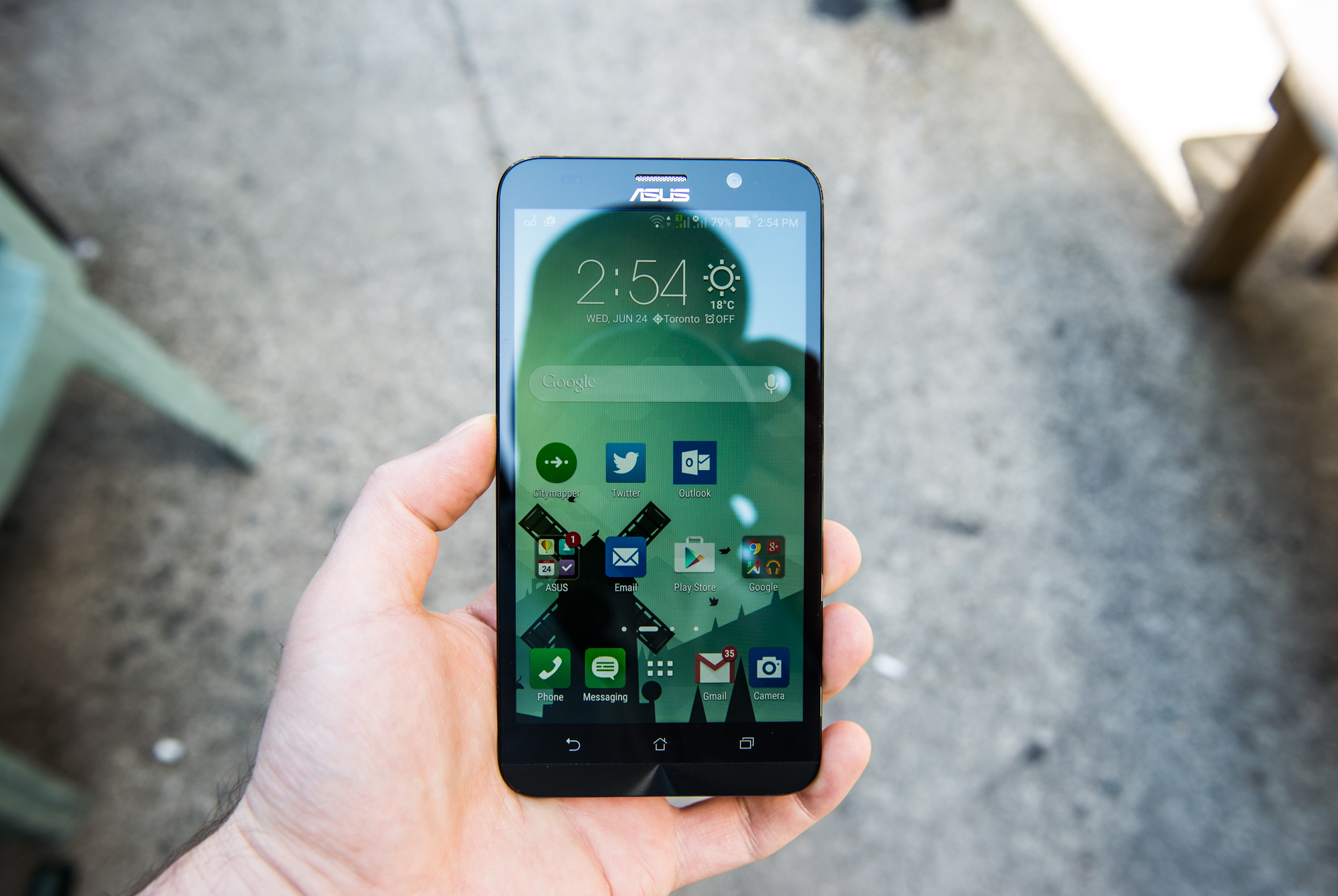
Because until recently, a cheap smartphone was almost always a bad smartphone, an unreliable communicator, running old software that would be stranded without updates immediately after it launched. But it was the companies whose goals it was to commoditize and drive down smartphone prices through intense competition that eventually realized Google’s dream of making good hardware cheaply available to all. The symbiotic process was certainly aided by Google’s improved design sense, and its maturity as a data analyzer; much of Android’s success is derived from Google’s core network of services like Search, Now, Gmail, Maps and Docs.
With the ZenFone 2, Asus enters a market that is both ripe for the picking – inexpensive, unlocked smartphones – and extremely saturated – high-end Android handsets – with little to no brand recognition. Is it a good buy? And is it worth perhaps waiting for the OnePlus Two, another low-cost solution? Let’s find out.
Video courtesy of MobileSyrup partner, Matthew Moniz
Specs
- Android 5.0 w/ ZenUI
- 5.5-inch 1080p LCD display
- 2.3Ghz quad-core Intel Atom Z3580 SoC w/ PowerVR G6430 GPU
- 4GB RAM / 64GB internal storage
- 13MP rear camera / 5MP front-facing camera
- 1080p video capture
- 3,000mAh battery
- WiFi a/b/g/n/ac, Bluetooth 4.0
- GSM/EDGE (850, 900, 1800, 1900 MHz), UMTS/HSPA+/DC-HSDPA (850, 900, 1700/2100, 1900, 2100 MHz), LTE (Bands 1, 2, 3, 4, 5, 7, 8, 17, 20)
- 152.5 x 77.2 x 10.9 mm
- 170 grams
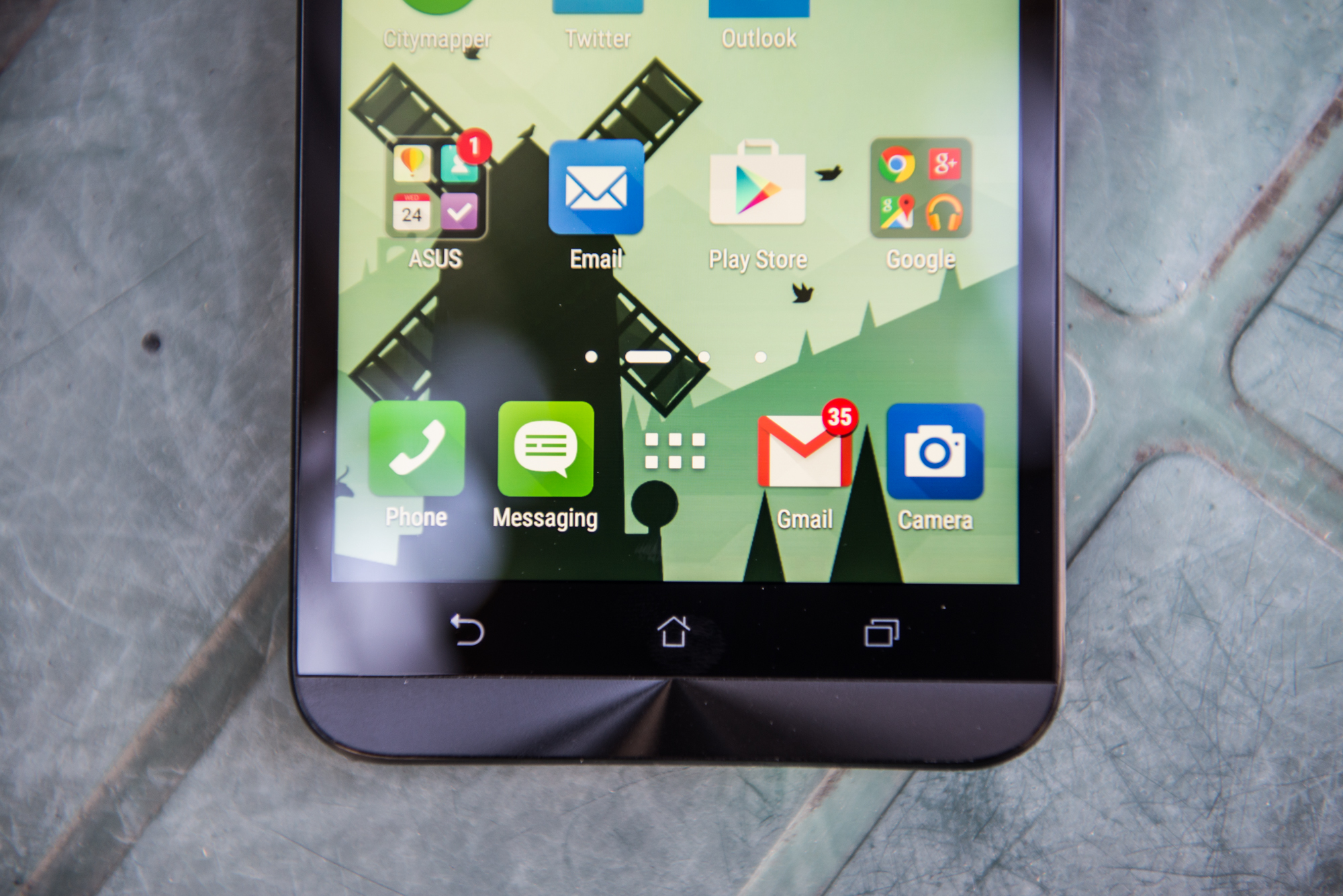
Device & Display
There isn’t much to be said about the Asus ZenFone 2’s aesthetic, largely because it’s an amalgam of so many devices that came before it. The company cribbed a little here, a little there to create a device that is both derivative and, at least in red, quite striking.
The front looks a little bit like HTC’s One M7; the back looks a lot like LG’s G2. The rear casing, which is removable but does not reveal a replaceable battery, feels like the Galaxy S4, with that smooth, fake metallic plastic. It’s not bad, just unremarkable.
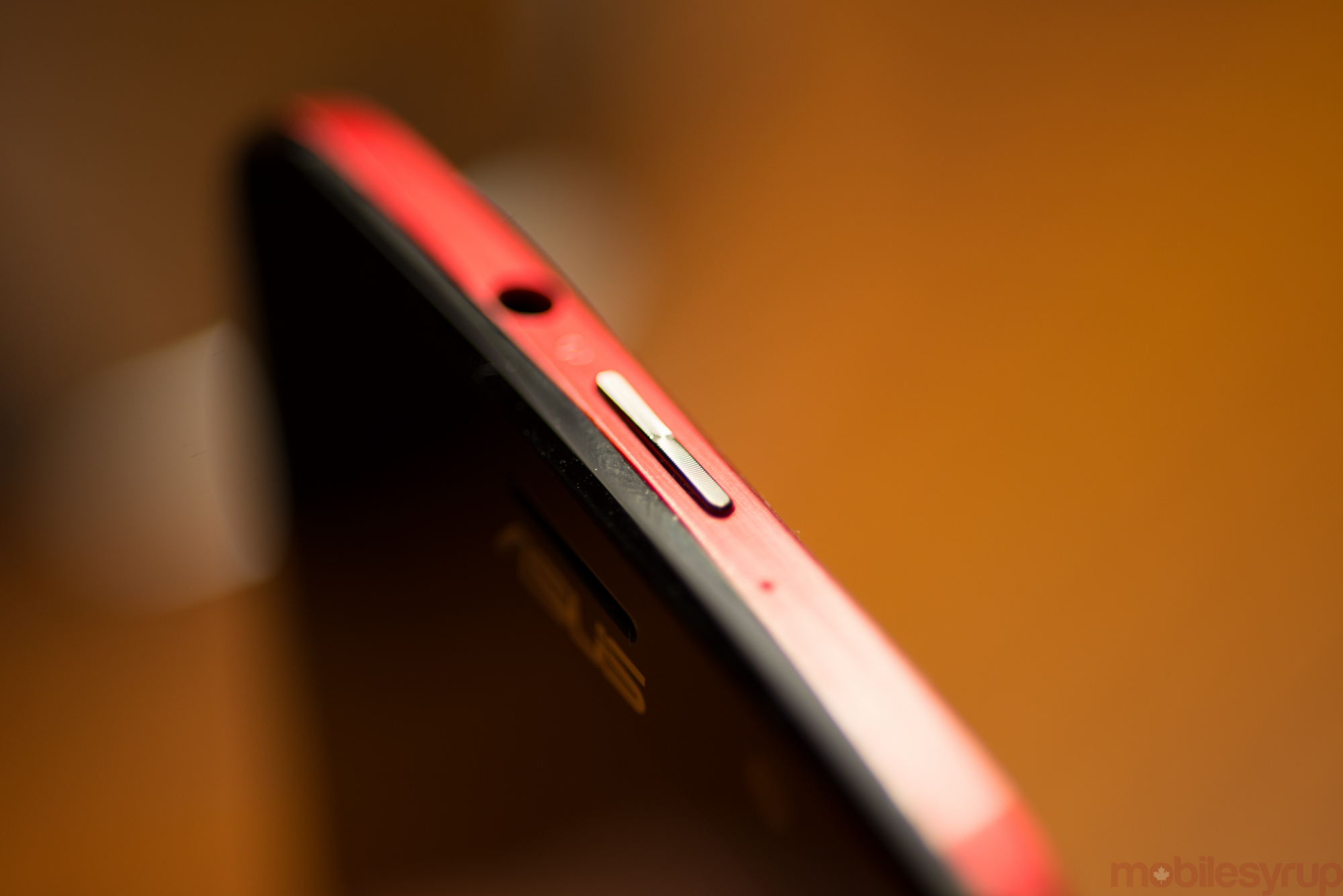
Worse is the placement of the power button, which sits on top of the device. I’d have preferred the company to steal more explicitly from LG and just adopt a similar layout, but alas, this is what we have.
That Asus chose to go with 2012-era capacitive buttons speaks to the target market here; aside from Samsung, few companies building phones for a North American audience would deign to stray from Google’s on-screen button standard. Having buttons below the screen elongates the frame, keeping the 5.5-inch LCD panel higher up relative to the LG G3 or G4, for instance. As a result, the device is about a centimetre taller than the G4.
At the same time, the capacitive buttons are actually quite useful in certain situations, as apps end up using the entire screen to display content. They’re also always accessible; no swiping up from the bottom or side to reveal them inside a game. I prefer Google’s official method, but I’m not entirely convinced there isn’t a happy medium (a la One Plus One, which offers both).
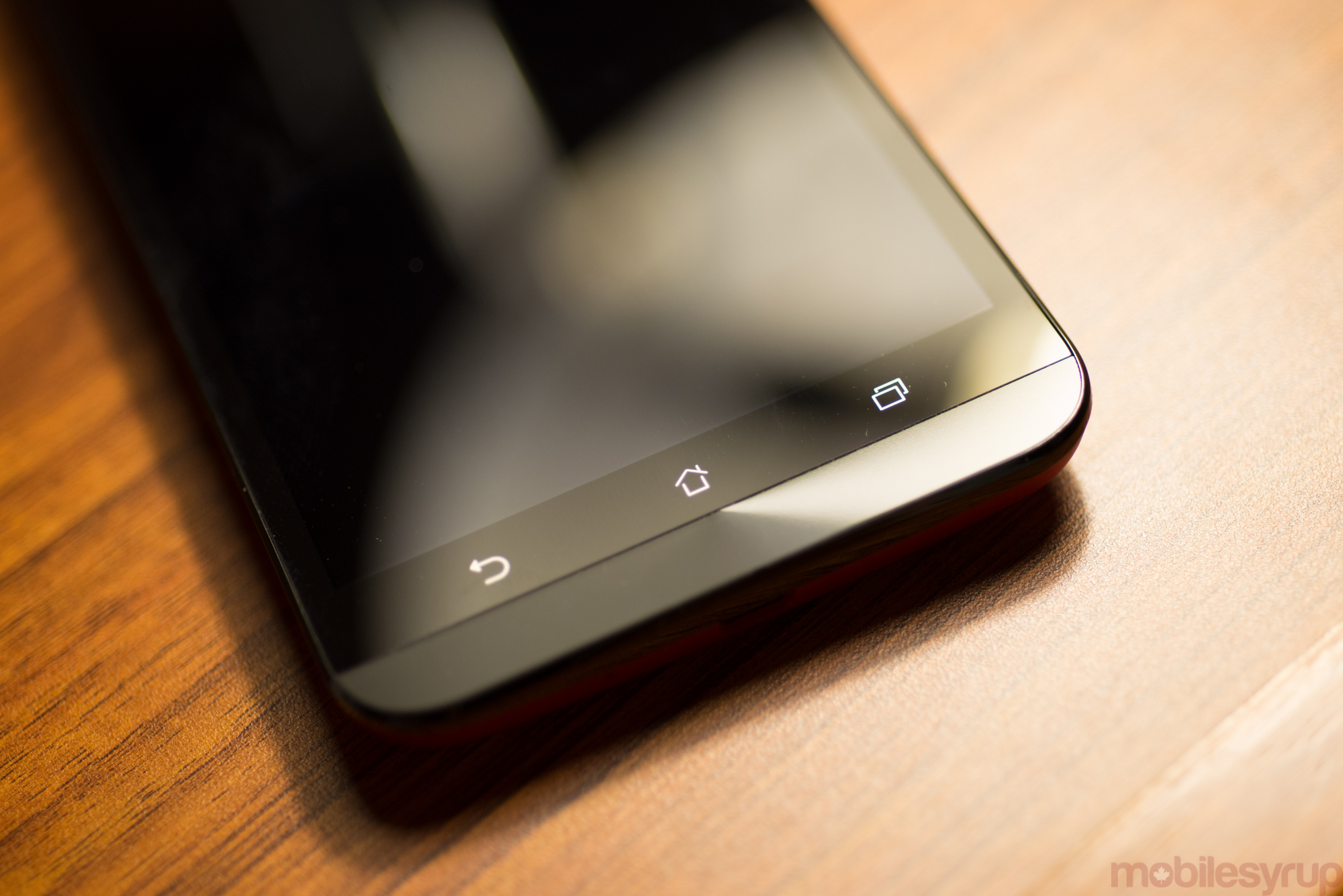
At 170 grams, the ZenFone 2 is hefty in ways few smartphones are these days. It’s also relatively oversized, even for a phablet, relegating it to two-handed use for all but the tallest of NBA players. Still, sales trends agree that size is a virtue for most smartphone buyers today, especially as convergence keeps more tablets permanently in the kitchen or living room.
Turning it around, the ZenFone 2’s 5.5-inch 1080p display is about as mediocre as one can find in 2015. That it is also a sharp, reasonably accurate, relatively bright display with ample viewing angles and dark, if greyish, blacks, proves how quickly such panels have dropped in price so companies like Asus can snap them up and distribute them en masse. The panel is no better than last year’s OnePlus One, and certainly inferior to the HTC One M8 and M9, but not so much so as to be notable. Such facile distinctions will pervade this review, with the $379 CAD price always in the back of my (and your) mind.
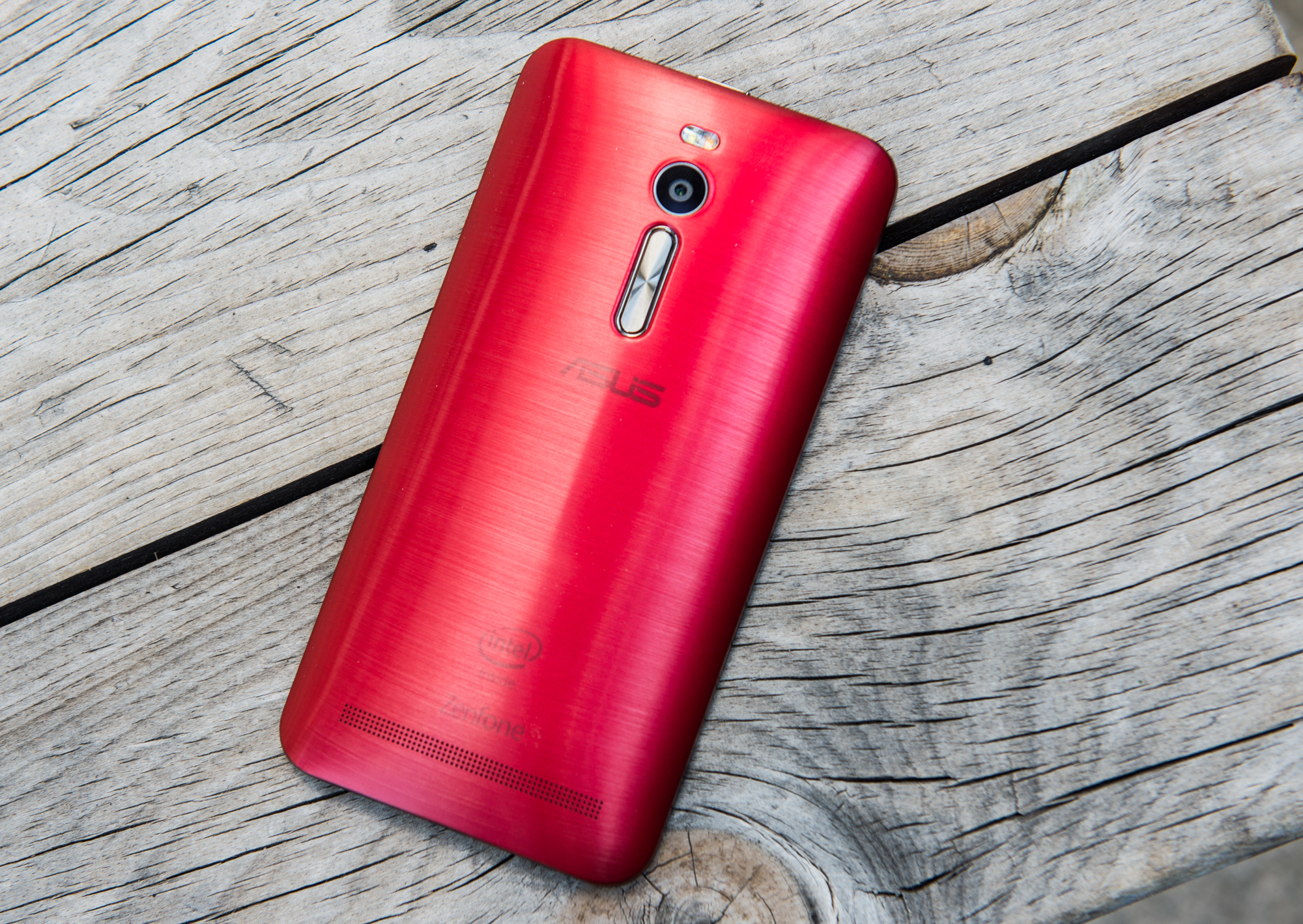
Performance and Software
Here’s where things get a bit more suspect. There is a lot of great hardware inside this inexpensive smartphone, to the point where Intel certainly has a financial role in keeping the ZenFone 2’s price down.
I am reviewing the higher-end 64GB model, which features a quad-core 2.3Ghz Atom chip and 4GB of RAM. Compared with the 1.8Ghz model, which drops the RAM count to 2GB and the storage number to 16GB, CPU performance is roughly 25% less, but storage speed is less than half, making it obvious where the $130 CAD worth of cuts were made (weak Canadian dollar aside; the cost in USD is $199 and $299 respectively).
Most of our readers will probably want to spend that extra hundy (with tax) and get the bigger, better model, but neither will disappoint for day to day minutiae.
The Atom Z3580 chip is, of course, based on the x86 architecture dominated by Intel. While the chip is fast, it’s built on an aging architecture that isn’t quite as scalable as recent generations of ARM chips. Single- and multi-threaded performance is comparable to the aging Snapdragon 800 chip, and is eclipsed by most recently-released ARM SoCs like the Snapdragon 805 and 810.
More impressive is the included Imagination Technologies PowerVR G6430 GPU which, though it is coming up on two years old, is still quite the workhorse. It was featured in the iPhone 5s’ A7 processor (though it runs at a slightly higher clock speed on the ZenFone 2). Gamers will be well accounted for here.
The extra gigabyte of RAM inside the device is largely meaningless at this point, both in objective and subjective performance metrics. It’s a nice-to-have, a way for Asus to speak directly to the demographic that grew up with its motherboards and graphics cards, taking to heart the message that “more is always better.” In a mobile device, unless that RAM is utilized it is just sucking up power, and I’m unconvinced the ZenFone 2 needs it. At the very least, it will help the device age a bit slower.
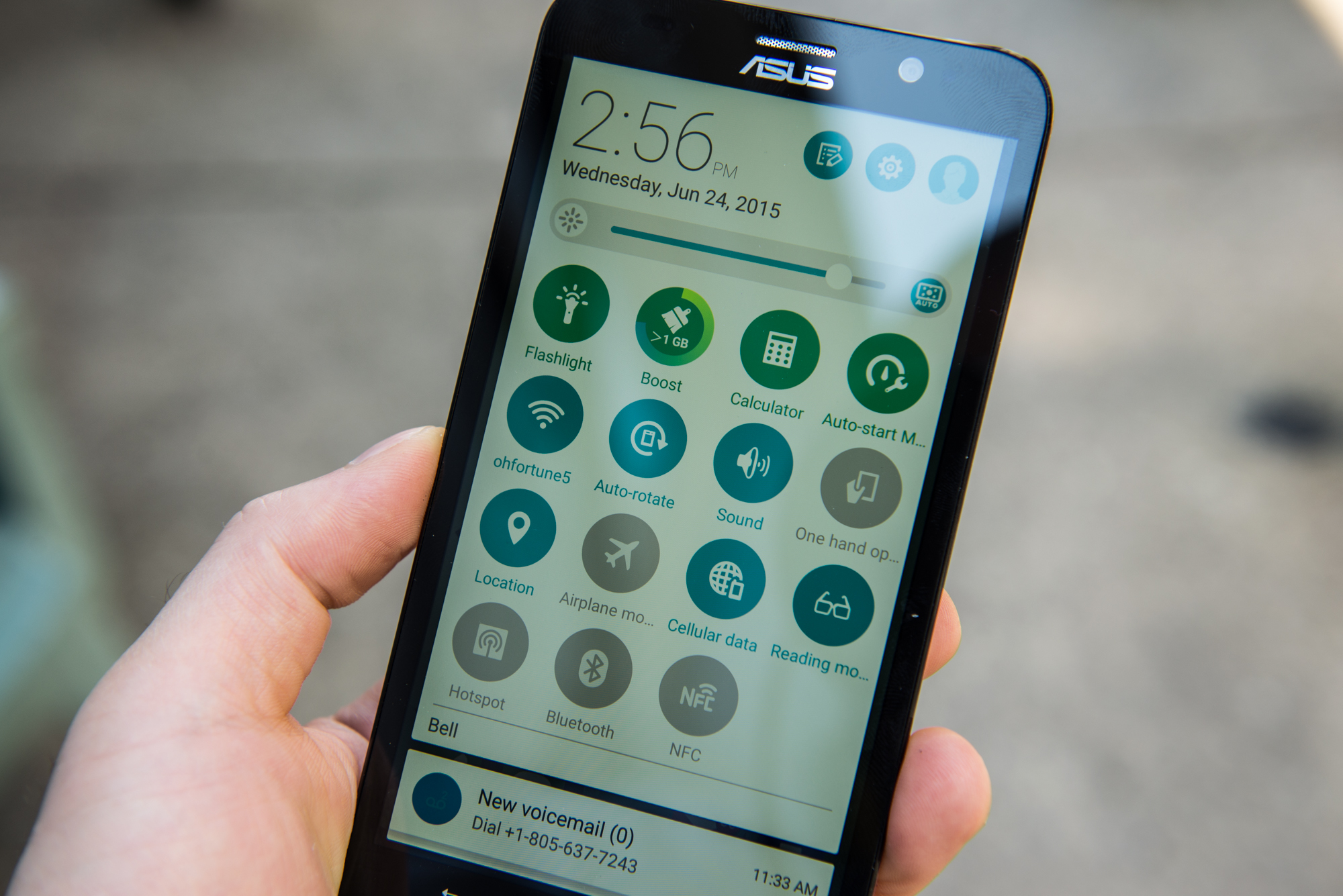
Which brings us to the software. Running Android 5.0 (not 5.0.2), the ZenFone 2 is a contradiction of terms. It is both a fast and stable device, but it also has the highest number of pre-installed apps I’ve ever seen. Many of these are built by Asus itself, and most have single serving purposes. There’s an app that allows Asus users to share photos over WiFi Direct. There’s an app that allows all Android users to share files using Bluetooth (I think, I never got it to work). There’s an app called Mirror that literally acts as a shortcut to the front-facing camera. There’s a movie editor, a photo collage creator, a phone support portal, and all manner of productivity apps.
None of these are superb; most of them are easily ignored (and hidden). Asus commits the cardinal sin of pre-installing a kid’s game that no one will play, along with TripAdvisor and five stubs for other apps that no one will use, but thankfully these can be disabled.
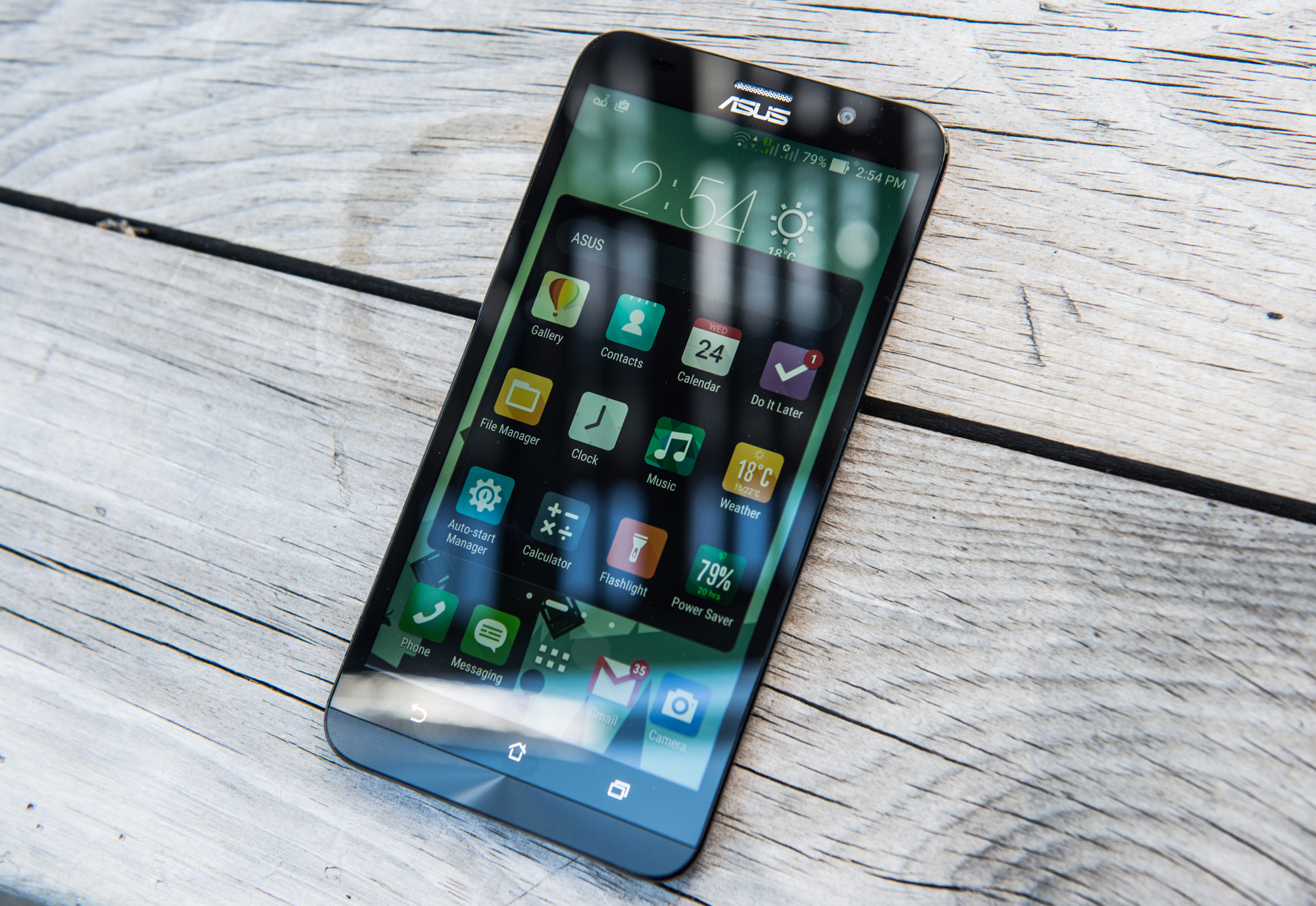
Upon first impression I was galled at the amount of so-called bloatware on the system, but I quickly cooled to the travesty. Asus is well within its right to add “value” to its phones the way it does on its PCs. Who am I to say that Asus’s notes app is not going to be useful to some Joe who buys this from Newegg or Canada Computers? Many customers believe more choice is a good thing, but I can’t get behind this trend of replicating Google’s services. Do you know anyone in North America that uses Asus’s cloud storage platform? I didn’t think so.
The biggest issue I have with Asus’s approach to Android is that it treats the operating system like a Windows PC. It has a startup app manager that prevents certain services from being loaded upon first boot. On a Windows PC, this can lead to better performance; on an Android phone, this may cause stability and performance problems. On one occasion, Asus prompted me to close Google Play Services, the most important process running in the background, because it was consuming too much battery. Asus needs to trust that Google designed its operating system to be self-sufficient, both in terms of RAM usage and battery consumption. Users shouldn’t be prompted to manually close background processes; instead, developers should be encouraged to build battery-friendly apps.
Aside from these small issues, using the ZenFone 2 was not dissimilar to any other high-end Android smartphone. It didn’t get bogged down over time, and battery life was more than sufficient to last the whole day. And while HTC, Samsung, LG and Sony show more restraint and consideration towards app and software design, enough of Google’s Material Design lineage comes through here to make up for the excessive number of pre-installs. Well, almost.
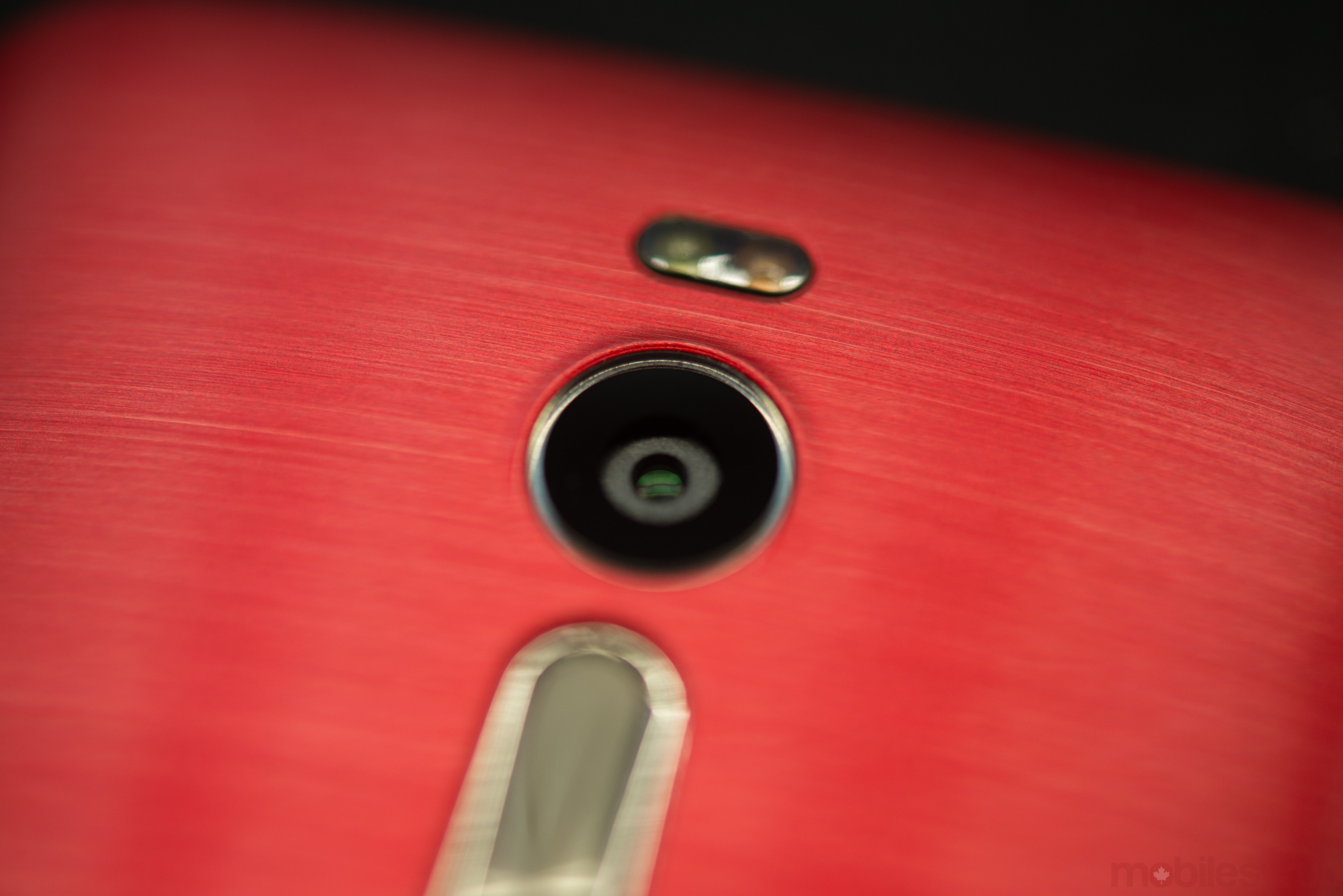
Camera
During its announcement, Asus spent quite a long time talking up its camera. Great outdoor shots; sharp indoor ones; excellent low-light; super high-resolution composites; finely-tuned HDR; excellent video.
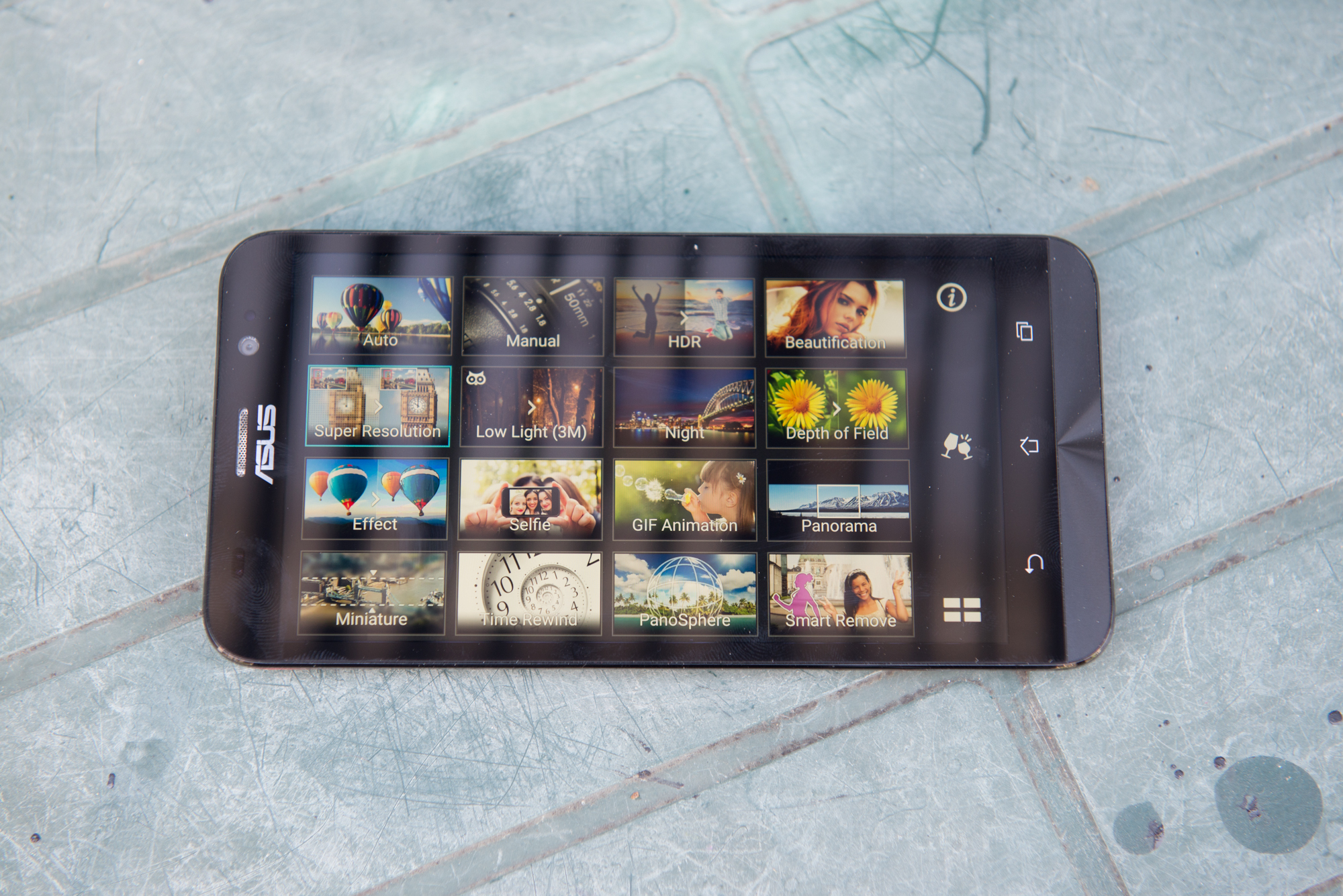
Unfortunately, in the world of the iPhone 6 Plus and Galaxy S6, the Asus ZenFone 2’s camera quality is merely mediocre, limited by an aging 13MP sensor and lack of optical image stablization.
One thing is true: there are plenty of ways to fine-tune one’s photos, from an elaborate manual mode to myriad options to suit every situation and lighting condition. And though some of these, like the digital stabilization-oriented Low Light mode, can produce decent alternatives to Auto, fidelity rarely impresses.
There are numerous parallels here to the Samsung Galaxy S4, which featured a 13MP sensor of a similar lineage (though this one is presumably newer and of slightly better quality) that made up for questionable quality with an overabundance of useless features.
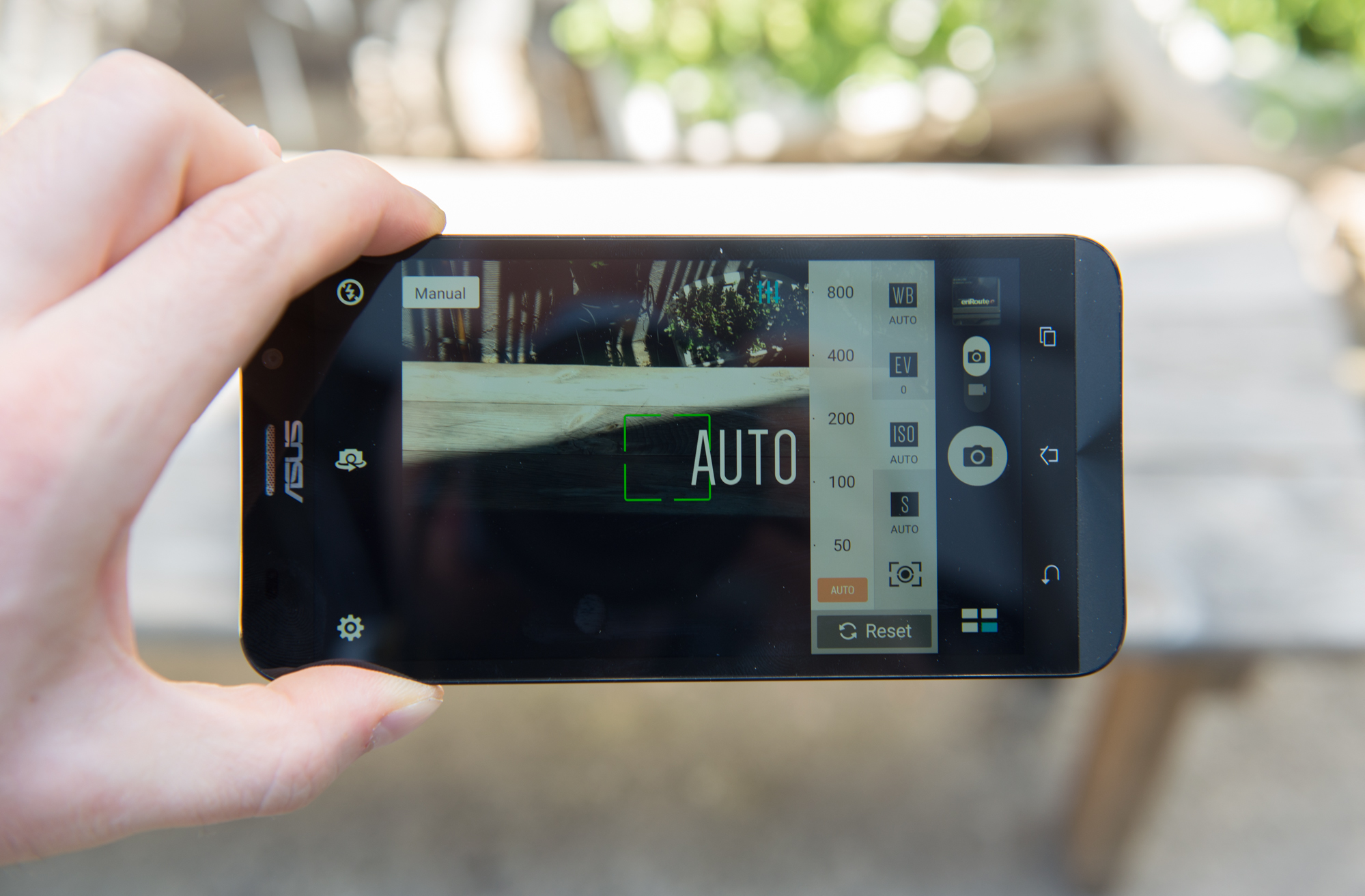
But unless you’re taking shots in the dark (figuratively and literally) with the ZenFone 2, you’re likely to be pretty happy with most of the photos.
Indeed, with the exception of softness in details at full resolution and an abundance of grain in some low-light shots, the ZenFone 2 is competent at its job. Lack of stabilization hurts its chances of being used as more than a casual daylight camera, but that’s all most people really want, anyway.
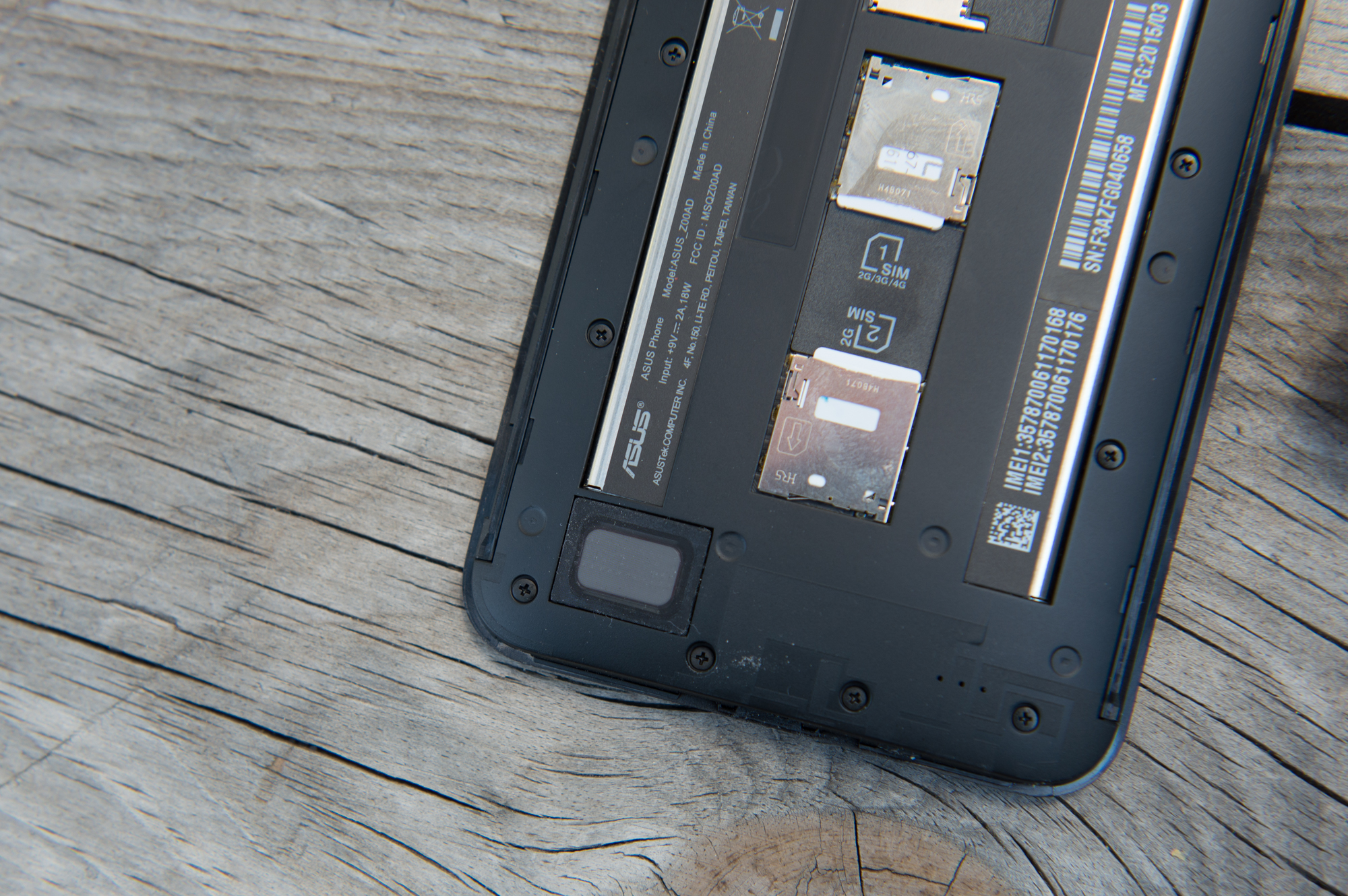
The Rest
The ZenFone 2 is a network-unlocked phone that works on every Canadian carrier on LTE and HSPA+. It is also one of the only dual-SIM phones available in Canada, which is more of a novelty than a premium.
See, in some parts of the world dual-SIM is synonymous with productivity; mobile workers will have two phone numbers, one for personal use (along with a data plan) and a pre-paid or low-cost plan for making business-related calls. The ZenFone 2’s second SIM slot is 2G-only, so Canadians looking to switch between data plans are out of luck, but it came in handy for me when traveling to the States with a Ready SIM number for making and receiving local calls.
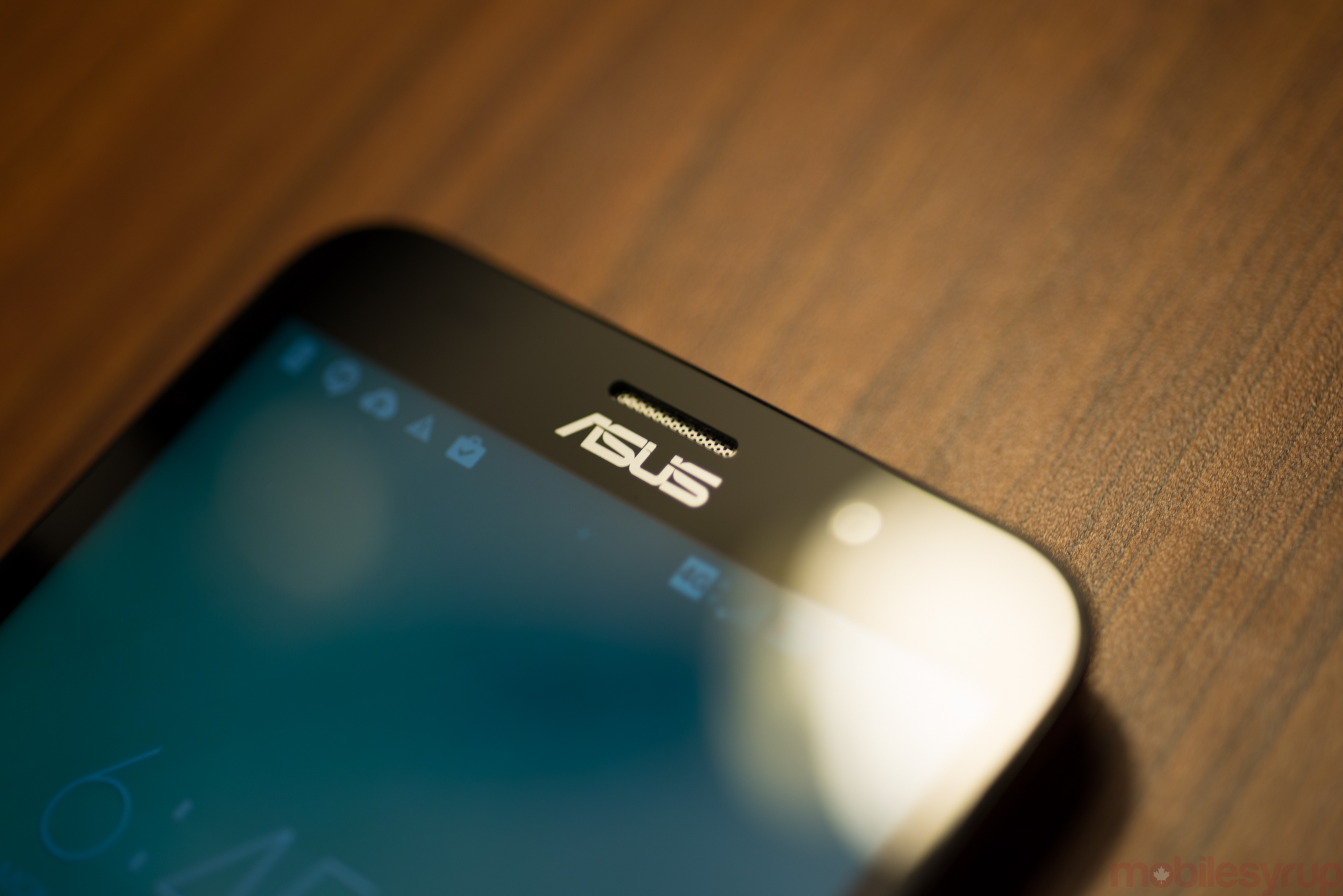
Call quality was not remarkable, but fared well on both T-Mobile and Bell, in New York and Toronto respectively. That the phone is unlocked by default certainly lends it to being a great travel phone, and I see some people buying it expressly for that purpose.
As for external sound quality, the perforations across the rear casing are nothing more than a ruse: the speaker itself is no larger than most other smartphones’, and worse than almost all. Tinny, thin and measly, avoid at all costs.
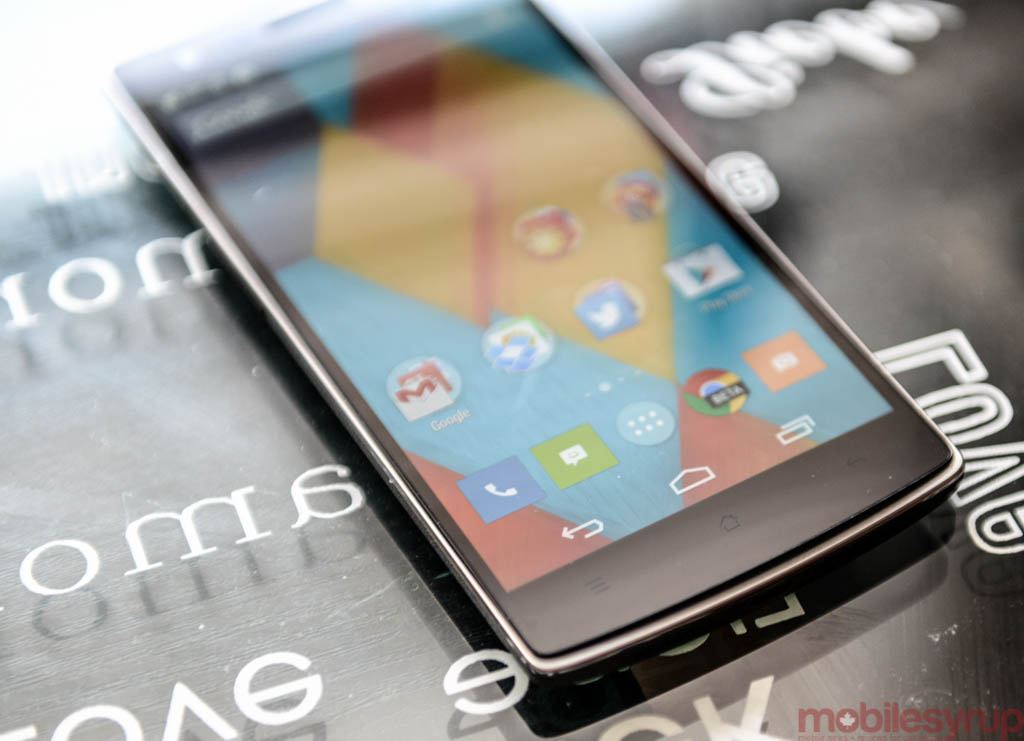
Competition
For $379, one has to compare the device to similarly-priced unlocked phones.
The most obvious comparison is to the OnePlus One, which is also a 5.5-inch 1080p device with a 64GB option. Over a year old now, the device is near to being replaced, and has some hardware issues like a persistent touchscreen responsiveness problem the ZenFone 2 avoids, but the two devices are very similar. The Snapdragon 801 in the OnePlus One is actually faster than the Z3580 in the ZenFone 2, but the latter’s 4GB of RAM should hold it in better stead over the long term. But with the OnePlus 2 being imminently announced, the ZenFone 2 may not seem like such great value for much longer.
The newly-announced Alcatel OneTouch Idol 3 is also an option. It’s slightly cheaper than the ZenFone 2, and has a far cleaner software experience, but it’s not quite as snappy. It is, however, sold through carriers with a subsidy.
Then there are lower-priced but more refined options like the Moto G, which feature significantly better software, and promises of more frequent software updates, but no distinct hardware advantage to speak of.
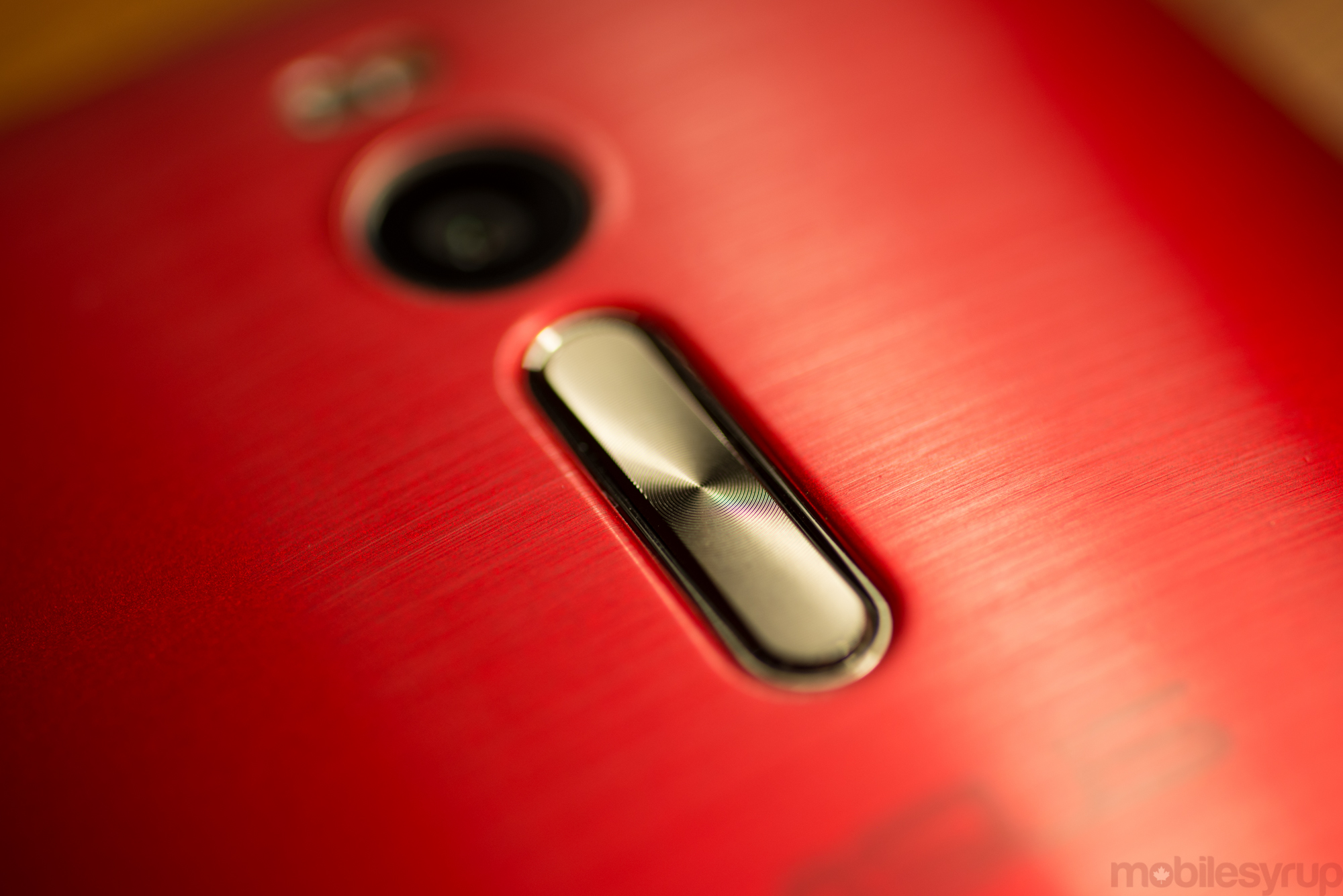
Conclusion
The ZenFone 2 is Asus’s finest mobile product to date, and an intriguing and welcome addition to the Canadian smartphone canon. It’s got some quirks, and a boatload of bloat, but much of it can be forgiven (and eliminated) with a bit of time investment.
A great traveller’s phone and an excellent gaming machine, what it lacks in unique features it makes up for in sheer tenacity.
Recommended
Pros
- Excellent price to performance ratio
- Good screen quality
- Dual-SIM useful for travellers
- Lots of camera settings, including a good manual mode
- Fast and stable
- Good battery life
- Exhaustive North American LTE network support
Cons
- An absurd amount of bloatware pre-installed
- Camera quality is inconsistent and often poor
- Large and heavy frame
MobileSyrup may earn a commission from purchases made via our links, which helps fund the journalism we provide free on our website. These links do not influence our editorial content. Support us here.



